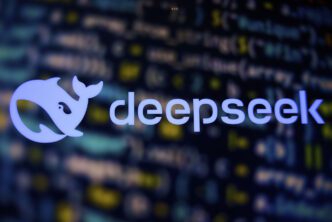Spot AI has rolled out a new tool called Iris, designed to help businesses build their own custom video AI agents without writing code. This marks a major step forward in making advanced video intelligence accessible across industries like manufacturing, retail, logistics, construction, and healthcare—sectors that heavily depend on real-time monitoring in physical spaces.
Rather than relying on traditional, complex AI development pipelines, Iris allows users to train and deploy intelligent agents using simple, natural language interactions. Businesses can now turn existing camera systems into smart detection tools that automate safety protocols, track operational inefficiencies, and trigger physical responses such as equipment shutdowns or access control.
Iris: From Prebuilt Tools to Personalized Agents
Spot AI has previously offered plug-and-play Video AI Agents that focus on general use cases like surveillance and safety. Iris goes further by letting users tailor agents to their own environment and priorities. Whether it’s identifying safety gear violations on a construction site or restocking alerts in a retail aisle, Iris adapts to each company’s specific needs.
Training an agent takes minutes, not weeks. Users can guide the system with just 20 labeled examples, teaching it what to detect and what to ignore. Once trained, Iris monitors live video feeds and takes predefined actions automatically—helping teams respond to incidents faster and reduce human oversight.
This user-friendly approach aims to solve a longstanding bottleneck in the world of enterprise video: the need for AI engineers and annotated datasets. By simplifying the process through conversational AI, Spot AI opens the door for non-technical teams to create powerful automation tools from day one.
Real-World Examples Across Industries
Iris has been built with flexibility in mind, supporting use cases that go well beyond typical surveillance tasks. Here’s how businesses are putting it to work:
- In factories, it helps identify production slowdowns or detect fluid leaks and escalates based on urgency.
- In warehouses, it flags unstable stacks of inventory that pose safety risks.
- Retailers are using it to watch shelf inventory levels and send automatic alerts when items run low.
- Hospitals can distinguish between staff and patients—even in similar uniforms—to manage traffic and improve safety.
- Construction sites use it to verify compliance with safety gear requirements.
- Security teams deploy Iris to spot suspicious objects like bolt cutters in parking lots.
What makes these agents powerful is their ability to operate continuously and respond instantly, cutting down on the need for manual review and allowing frontline teams to take action as soon as issues arise.
Iris is a cornerstone in Spot AI’s broader mission: turning raw video footage into actionable insights for every team, not just IT or security. It’s about moving from passive camera networks to active operational intelligence—and doing so without adding technical debt.
The tool will be showcased at Google Cloud Next, where CEO Rish Gupta will join a panel to discuss how AI is changing the way businesses operate in physical environments. His session will cover how tools like Iris are shaping the next generation of workplace automation.













